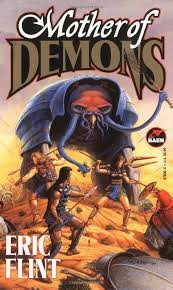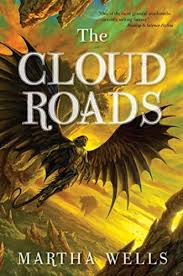So, as usual, I’ll be at Archon this year — it’s the only SF convention that’s so close I can drive back and forth. I most particularly don’t want to put my mother in the position of feeling she should take care of my dogs or stay overnight at my house — she is getting a bit frail for that — so coming over to let the dogs out, sure, but anything more than that, not really. Therefore, I took myself off the schedule for evening events, with the expectation that I will definitely come home each evening and drive back up to Collinsville each morning.
I do like Archon. It’s generally well run, by people who have been doing it a long time and have the process down. It’s not a big convention, but the costumer’s guild in St Louis is apparently top-notch, because Archon usually has a fantastic masquerade, which alas, I will be skipping because I will be on my way home before that.
Anyway, looks like one panel on Friday and the rest on Saturday.
Here’s the first panel:
Alien Species That Make Sense 4 Oct 2024, Friday 14:00 – 15:00 — How do you create alien species that make sense to the readers? Not doing so will create gigantic plot holes, so learn how to avoid this!
I mostly disagree with the idea that fictional alien species need to make sense. I do, however, agree, that alien species should make sense TO THE READER or FOR THE STORY.
For a subset of SF novels, the aliens ought indeed to make sense, and by “make sense” in this context, I mean they should make anatomical, behavioral, ecological, and evolutionary sense, and they should not be clones of humans in any of those realms. If you’ve got an arthropod-like species that’s rather like a giant mollusk — and if you do, then you need to either ignore or explain why the exoskeleton is not too heavy, because, spoiler, it’s going to be too heavy — but if you do have this species, then it is just stupid to make it psychologically and behaviorally and socially just like shelled humans with pincers.

The giant mollusk should not be psychologically just like a human because that’s nuts.
Unless you’re writing a farce or something and then, sure, the giant mollusk can in fact have a personality cloned from Conan the Barbarian or whatever the author wants. That’s why the needs of the story trump everything else.
I think there are basically the following categories of aliens in SF:
A) Aliens that are really humans; ie, if you are writing something called “The Alien’s Mail-Order Bride,” then probably your aliens are going to be very, very human. Very. This is not at all plausible (obviously), but creating plausible aliens is not only not the point of the story, it’s totally antithetical to the point of the story. Other examples in this general vicinity:
— Ascending (Vardeshi Saga), Pechenick. I don’t care that the aliens are basically just like humans except much more gorgeous and stronger and faster. Yes, they might as well be vampires or something. No, they are not at all plausible. This story is deliberately getting as close as possible to The Alien’s Mail-Order Bride without (quite) descending into B-movie territory. I will just mention here that although I liked things about the story, I found the high level of character stupidity almost unendurable. In fact, it was literally unendurable and I DNF the book
— Cuckoo’s Egg, Cherryh. This is a very different example, which is why I picked it. Here, the author is not skirting B-movie territory at all. The author is saying something thematically important, using aliens who are about as different socially as, say, contemporary American society is from Heian Japanese society, and much less different than either is from Sparta. The things that might make them more socially different don’t wind up making them actually socially different — I mean shonun have reproductive seasons, but this makes no difference to their societal development as far as the reader can tell. This is fine because bringing out societal, behavioral, and psychological differences would be antithetical to what Cherryh is doing with this story.
B) Aliens that look pretty human, but aren’t (quite) as human as they look.
— Foreigner. Here, the aliens are pretty human behaviorally, but they have these emotions that aren’t quite like human emotions, there is fertile ground for misunderstandings, and thus we had the War of the Landing. The emotional differences are a big, big part of the story and intrinsic to what Cherryh is doing with the story. But at the same time, the atevi are more or less accessible to the human reader, because, I mean, that’s pretty important.
C) Aliens that don’t look human, but are socially, psychologically, and emotionally identical to humans.
— Mindtouch and others by Hogarth. There are all these nonhuman aliens, but they’re all basically varieties of furry quadrupedal humans. Not quite. But basically, that’s what they are. Also, socially they’re identical to humans. I don’t mean all of the different types of aliens are identical to one human society. I mean they’re basically all variable within the typical human types of societies — not as different as the Spartans. They occupy one end of a similarity spectrum — they’re just like humans, basically.
D) Aliens that don’t look human, and are socially and psychologically different from humans.
— The Cloud Roads by Wells. I love this story so much. Although the Raksura are socially different from humans and have different reflexes, and that’s very neat, emotionally and psychologically they are VERY similar. This is one reason the story carries so much emotional impact. Wells doesn’t have to persuade the reader that Moon is a sympathetic and relatable protagonist. He is incredibly sympathetic and relatable right from the first moment. But the different reflexes are a great touch, and of course the society is unique.

— A Darkling Sea, Cambias. Everybody loves the Ilmartans, including me. They are the aliens who live in lightless seas of Europa and who resemble 9-foot long lobsters, and for a species that are so exceedingly different physically and occupy such an exceedingly different ecological niche, they’re remarkable similar to humans socially, behaviorally, and emotionally. Not completely identical. But really very similar. This gives the reader something to get hold of. The Imartans do work well in the story. But their society is rather close to ordinary human societies, except for reproductively, which I grant is pretty different. Okay, very different.
— A Fire Upon the Deep, Vinge. You have to be kind of different when your personality is a gestalt of individual dog-like creatures. There are lots of features of the tines that are different from humans. Emotionally, they’re still quite similar. It’s hard to write aliens who are emotionally very dissimilar from humans and still have them work for human readers.
— Mother of Demons, Flint. Here are the giant mollusks. I had a hard time deciding to put this book in this category. I basically did that not because of the weapon-swinging battle mollusk on the cover but because of the other species, the Maia, who are so crucial to human survival. They really are not at all like humans.
— No Foreign Sky.

Emotionally quite similar, but socially pretty different, and that impacts the emotional experience of life too. There’s the plural thing for the female turun and the social isolation of the male turun. Plus a strong instinct to close ranks and defend the family (for the females) versus attack as individuals (for the males). Much less tendency to generalize from family to city-state or nation. Much less aggressive than humans. Plus seeing things as fours and multiples of fours, not as dichotomies of two.
We should get deeper into turun society and the integrated human/turun society in the next book, if I ever get to it, sigh.
SO, what is YOUR favorite alien species in SF? I would greatly appreciate suggestions because here comes this panel, and also, did I miss any categories?
Please Feel Free to Share:







The post Archon panel #1: Aliens appeared first on Rachel Neumeier.
 newest »
newest »
 newest »
newest »
 And THAT makes me think of "The Father Thing," a story that gave me actual nightmares when I was in grade school ...
And THAT makes me think of "The Father Thing," a story that gave me actual nightmares when I was in grade school ...
 Rachel wrote: "And THAT makes me think of "The Father Thing," a story that gave me actual nightmares when I was in grade school ..."
Rachel wrote: "And THAT makes me think of "The Father Thing," a story that gave me actual nightmares when I was in grade school ..."













I read it when I was a teen and I still love it. The aliens here are parasites and not human at all. But they try their best to imitate humans after killing them and stealing their identities.